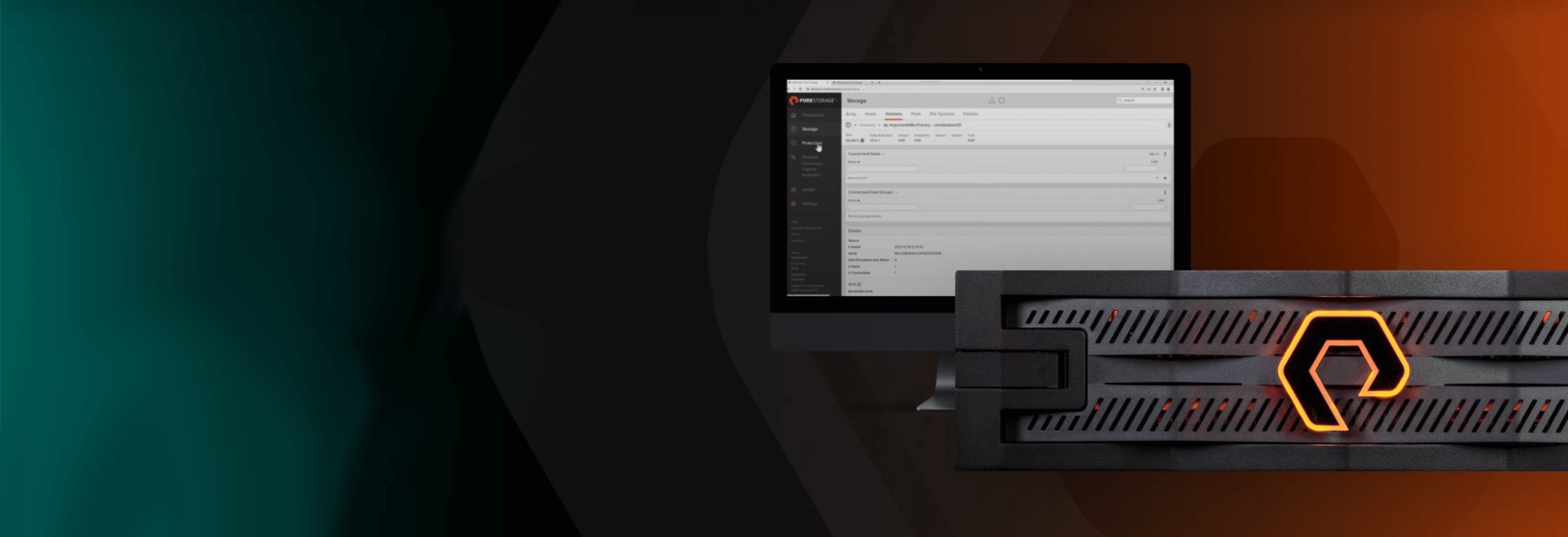How do you ensure the availability of applications and application data? This question keeps many CIOs awake at night. Businesses need to make sure data and critical applications are available when disaster strikes. Pure Storage® ActiveDR™ has solved the disaster-recovery challenge.
FlashArray ActiveDR
Released with Purity 6, ActiveDR is easy to deploy and delivers continuous data replication between FlashArray™ devices. ActiveDR provides reliable disaster recovery by replicating more than just volumes. It also copies snapshot histories, snapshot schedules, volume settings (like QoS limits), protection groups, and user-defined volume tags to the target array.
MongoDB Replica Set
Replica set is MongoDB’s high-availability and redundancy solution. In the MongoDB replica set, data is replicated between the primary and secondary nodes. Every replica set must have a primary node, the election of which requires a majority of nodes to be available.

Typical three-node MongoDB replica set
Disaster recovery with MongoDB is possible by placing replica set members in multiple data centers. In a three-member replica set, each node should be in a different data center. If deployment to three data centers isn’t possible, a cloud-based MongoDB instance may also be used.
Replication
Both MongoDB and FlashArray ActiveDR use asynchronous replication. We can see the effectiveness of replication by looking at the replication lag, which shows how far behind the source the target array or node has fallen. Lower replication lag means less data loss at the time of disaster. ActiveDR replication can be more efficient than MongoDB replication. In our testing, we compared the replication lag of FlashArray to that of MongoDB. The FlashArray replication lag during heavy write operations (50% write) was up to 33% lower than MongoDB’s replication lag.

FlashArray and MongoDB replication lag
ActiveDR with MongoDB Replica Set
A three-data center or cloud-based MongoDB deployment may not always be possible. Combining ActiveDR with MongoDB replication eliminates the need for a third data center. MongoDB replica set protects production site data and database service while FlashArray, with six-nines uptime, provides the required high availability. ActiveDR ensures that data is replicated to another FlashArray. Connecting pre-configured MongoDB hosts on the disaster-recovery site further reduces failover downtime.

Business Benefits
Both solutions are readily available: ActiveDR does not require a new license and is part of Purity 6, while MongoDB replica-set functionality is built into the database binaries. Integrating FlashArray data services, including ActiveDR with MongoDB replica set, offers many benefits:
- FlashArray data reduction translates to significant disk-space savings—lower disk usage means lower storage cost.
- FlashArray volume copy allows almost instant expansion or recovery of a replica set, meaning no more waiting for MongoDB replication.
- FlashArray volume snapshot provides an easy-to-use method for controlling recovery point objective.
- With FlashArray Snap-to-NFS and Purity CloudSnap™, you can offload your data elsewhere for long-term retention.
- There’s no need for a third data center.
- Lower replication lag reduces the potential for data loss.
- MongoDB replica set offers site-data replication and database service for high availability.
Learn more about ActiveDR and MongoDB on FlashArray.

Free Test Drive
Try FlashArray
Explore our unified block and file storage platform.






